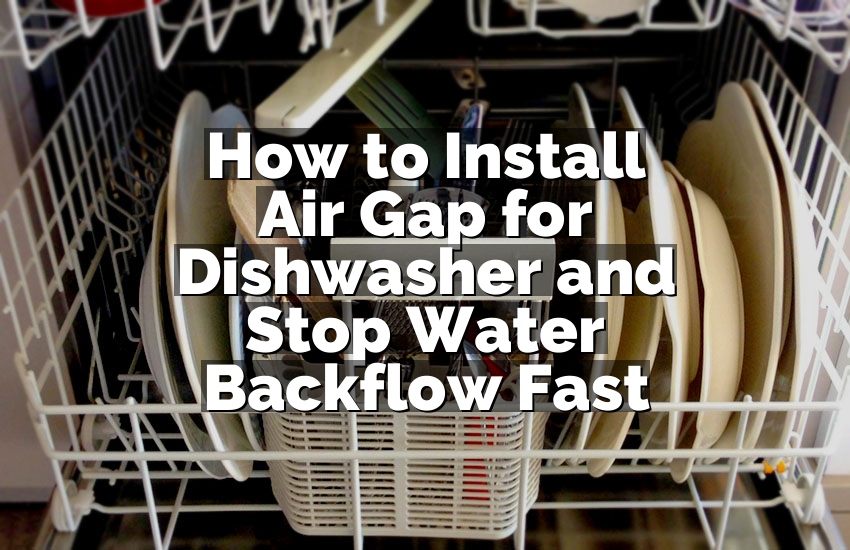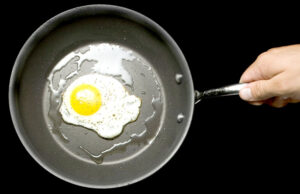As an Amazon Associate, I earn from qualifying purchases at no extra cost to you.
How to Install Dishwasher Brackets Fast and Secure Like a Pro
You pull your dishwasher out and suddenly notice those loose brackets staring back at you. Ugh, right? Don’t worry, in this article, we’ll tackle the chaos together. Picture this: a wobbly dishwasher that won’t sit right, water spilling, or just that annoying tilt. It’s frustrating, but we’ll fix it. I’ll show you exactly how to get your dishwasher snug, safe, and steady, and you might even enjoy the process a little.
First, gather all tools: screwdriver, drill, level, and brackets. Next, understand your dishwasher’s mounting points. Clear the area and remove obstacles. Attach brackets to the dishwasher carefully, then align it with the counter or cabinets. Finally, tighten securely and test stability.
Prepare the Area and Gather Tools
Before touching the brackets, make sure your kitchen is ready for action. Move the dishwasher away from the cabinets and unplug it. Check for water connections and drain hoses so nothing gets damaged. Clearing the space makes the job safer and easier, and you won’t be bumping elbows with cabinets or scraping walls.
Next, gather all necessary tools. You’ll need a screwdriver, drill, level, measuring tape, and of course, the brackets. Double-check that you have the exact brackets for your dishwasher model. Using the wrong ones can make installation unstable. Having everything ready avoids frustrating trips back and forth.
Make sure the floor is dry and stable. A damp or uneven surface can make aligning brackets tricky. Lay down a small mat or cloth to protect the floor from scratches or dropped screws. Little preparations like these save time and stress later.
Finally, read the dishwasher manual for any model-specific notes. Some brands have extra requirements or recommended bracket types. Following these instructions ensures a smooth installation and prevents future issues. You’ll feel more confident and prepared before the actual bracket work begins.
- Clear area and move dishwasher away from cabinets
- Gather screwdriver, drill, level, measuring tape, and brackets
- Dry and stable floor for safe work
- Read dishwasher manual for model-specific tips
Measure and Mark the Bracket Positions
Proper measurement is key to avoiding a crooked dishwasher. Start by determining where the brackets will attach. Usually, brackets go at the top front of the dishwasher, aligning with cabinet edges. Use a measuring tape to get precise points on both sides.
Mark the positions lightly with a pencil. Double-check distances on each side to ensure symmetry. Misaligned brackets can cause the dishwasher to tilt or not fit under the counter. Take your time here—it’s easier to fix marks than a crooked dishwasher.
Check the level before drilling. A simple level tool will show if your marks are perfectly horizontal. Even a small tilt can create problems, so adjusting now saves frustration later. You want the dishwasher perfectly straight.
Finally, consider any countertop overhang or cabinet obstacles. Brackets should not interfere with drawers, cabinet doors, or under-counter appliances. Adjust markings if needed, making sure the dishwasher will slide in smoothly without bumping anything.
- Measure bracket locations accurately
- Mark positions with pencil and double-check
- Use level to ensure horizontal alignment
- Check for countertop or cabinet interference
Attach the Brackets to the Dishwasher
Start by positioning each bracket on the marked points. Hold it in place and make sure it sits flush against the dishwasher frame. Brackets that wobble during installation can make the whole unit unstable.
Use a screwdriver or drill to fasten screws. Tighten carefully, avoiding over-tightening, which can strip holes or bend metal. Securely attached brackets ensure your dishwasher won’t move or shift under weight or vibration.
Check alignment often. As you attach each bracket, step back and look at the unit from the front. Brackets should sit evenly on both sides. Adjust if necessary before moving on.
Finally, give the brackets a gentle tug. If they feel solid and don’t shift, you’re ready for the next stage. This small test can prevent headaches later and gives peace of mind that the foundation is strong.
- Place brackets flush on dishwasher frame
- Fasten screws carefully without over-tightening
- Check alignment from front view
- Test brackets for stability
Slide and Position the Dishwasher
With brackets attached, carefully slide the dishwasher into place. Move slowly, ensuring hoses and cords are not pinched. A tilted or forced slide can damage the appliance or connections.
Check the height against the counter or cabinet. Adjust slightly if the dishwasher sits too high or low. A perfectly level appliance prevents leaks and ensures smooth operation.
Align brackets with the underside of the counter or cabinet. Some may require a small adjustment to meet the counter lip. Patience here pays off, as a misaligned dishwasher can wobble during use.
Finally, use a level to double-check front-to-back and side-to-side alignment. Make small tweaks as needed. Once satisfied, you can move on to securing the dishwasher for permanent stability.
- Slide dishwasher slowly into position
- Check height and level against counter
- Align brackets with cabinet or counter lip
- Double-check level and adjust as needed
Secure the Dishwasher Brackets
Now that the dishwasher is in place, attach the brackets to the cabinet or countertop. Use the screws provided with your bracket kit and drill carefully. Ensure each screw is fully tightened.
Double-check that brackets are flush and stable. A bracket that is loose or misaligned can lead to movement or noise when the dishwasher runs. Take your time to secure them properly.
Test the stability by gently pushing the dishwasher front-to-back and side-to-side. It should feel firm without shifting. If there is movement, tighten screws more or adjust the bracket positions slightly.
Finally, inspect for any gaps or interference with surrounding cabinets. Properly secured brackets keep the dishwasher aligned and safe for daily use. This final check guarantees a professional and reliable installation.
- Attach brackets to cabinet or counter
- Tighten screws fully and ensure flush fit
- Test stability by gentle movement
- Inspect for gaps or cabinet interference
Connect Water, Power, and Test
After brackets are secured, reconnect the water supply, drain hose, and power. Ensure connections are tight to prevent leaks or electrical issues.
Turn on the dishwasher and check for proper operation. Listen for unusual vibrations or noise. A wobble or shake may indicate the brackets need a small adjustment.
Observe the dishwasher during a short wash cycle. Make sure it stays level, doesn’t rock, and water flows correctly. Adjust brackets slightly if needed to perfect alignment.
Finally, double-check the floor around the dishwasher. Ensure no water leaks or tools are left behind. A clean and stable setup ensures long-lasting performance and peace of mind.
- Reconnect water, drain, and power
- Turn on dishwasher and check for wobble
- Observe during short wash cycle
- Inspect floor and surroundings
Final Thoughts
Installing dishwasher brackets can feel tricky at first, but it’s manageable with patience and preparation. Taking the time to measure, align, and secure everything pays off in a stable, smooth-running appliance. Once done, your dishwasher will stay perfectly in place, reducing leaks, noise, and frustration. A little effort upfront saves a lot of hassle later, giving your kitchen a professional and safe finish.
| Task | Tip | Tool Needed | Common Issue | Solution |
|---|---|---|---|---|
| Clear area | Move dishwasher | Hands | Tight space | Remove obstacles |
| Measure marks | Pencil & level | Tape measure | Crooked placement | Re-measure |
| Attach brackets | Flush & tighten | Drill & screwdriver | Wobble | Adjust screws |
| Slide dishwasher | Move slowly | Hands | Pinched hoses | Adjust position |
| Secure brackets | Tighten screws | Drill | Loose bracket | Re-tighten |
| Connect & test | Check level | Wrench & screwdriver | Leak or noise | Adjust bracket |
Frequently Asked Questions (FAQs)
Is it necessary to remove the dishwasher completely before installing brackets?
Yes, removing the dishwasher ensures you have full access to the sides and top where the brackets attach. Trying to install brackets with the dishwasher partially in place increases the risk of misalignment. You may scratch cabinets or floors, and brackets could be loose. Pulling the dishwasher out allows for precise measurement, secure attachment, and easier leveling. It also prevents strain on hoses and electrical connections, ensuring a safe and smooth installation.
Can I use any brackets for my dishwasher?
Not all brackets are compatible with every dishwasher. Manufacturers design brackets for specific models to match frame size, weight, and attachment points. Using the wrong brackets can result in instability, noise, and even damage to the appliance. Always check the dishwasher manual or manufacturer website for recommended brackets. Using model-specific brackets ensures proper fit, stability, and long-term durability. It saves time and prevents frustration during installation.
Do I need a level when installing brackets?
Absolutely. A level is essential to ensure your dishwasher sits straight. Even a slight tilt can cause water pooling, improper door alignment, and vibrations. By using a level, you ensure both side-to-side and front-to-back alignment. Checking at multiple points during installation guarantees a smooth operation. It may seem small, but this step prevents leaks and ensures the appliance functions as designed.
Is it safe to drill into cabinets for bracket installation?
Yes, but with care. Use a drill bit suitable for the cabinet material and avoid drilling too deep. Check for hidden wires or pipes first. Proper drilling ensures a secure hold without damaging your cabinets. Always follow manufacturer instructions for screw size and placement. Pre-drilling pilot holes can make installation easier and reduce the risk of splitting the wood. Safety and precision are key here.
Can I install dishwasher brackets alone?
Yes, it’s possible, though having a helper makes the process easier. Brackets must align while sliding the dishwasher into place, and a second pair of hands can hold the unit steady. Working alone requires patience, using furniture sliders or a mat to protect the floor. With careful planning and slow movements, one person can manage the installation safely. However, a helper reduces stress and risk of mistakes.
Do I need special tools for bracket installation?
No special tools are required, just common household tools. A drill, screwdriver, measuring tape, pencil, and level are usually enough. Some brackets come with specific screws, but these are typically compatible with standard tools. Having basic tools ready ensures smooth installation. Avoid improvising with the wrong tools, as it can damage screws, brackets, or your dishwasher.
Is it necessary to test the dishwasher after bracket installation?
Yes, testing is critical. Running a short cycle ensures the appliance is level, secure, and free from leaks. It lets you identify any wobbling, misalignment, or connection issues before regular use. Testing confirms the installation was successful and prevents long-term problems. A simple observation of stability and operation saves time and stress later.
Can loose brackets damage the dishwasher?
Yes, loose brackets can cause vibrations, tilting, and misalignment. This can lead to water leaks, noisy operation, or damage to internal parts. Over time, a poorly secured dishwasher may warp or strain connections. Tight, stable brackets prevent movement, protect your appliance, and extend its lifespan. Ensuring brackets are fully secure is a small effort with big benefits.





